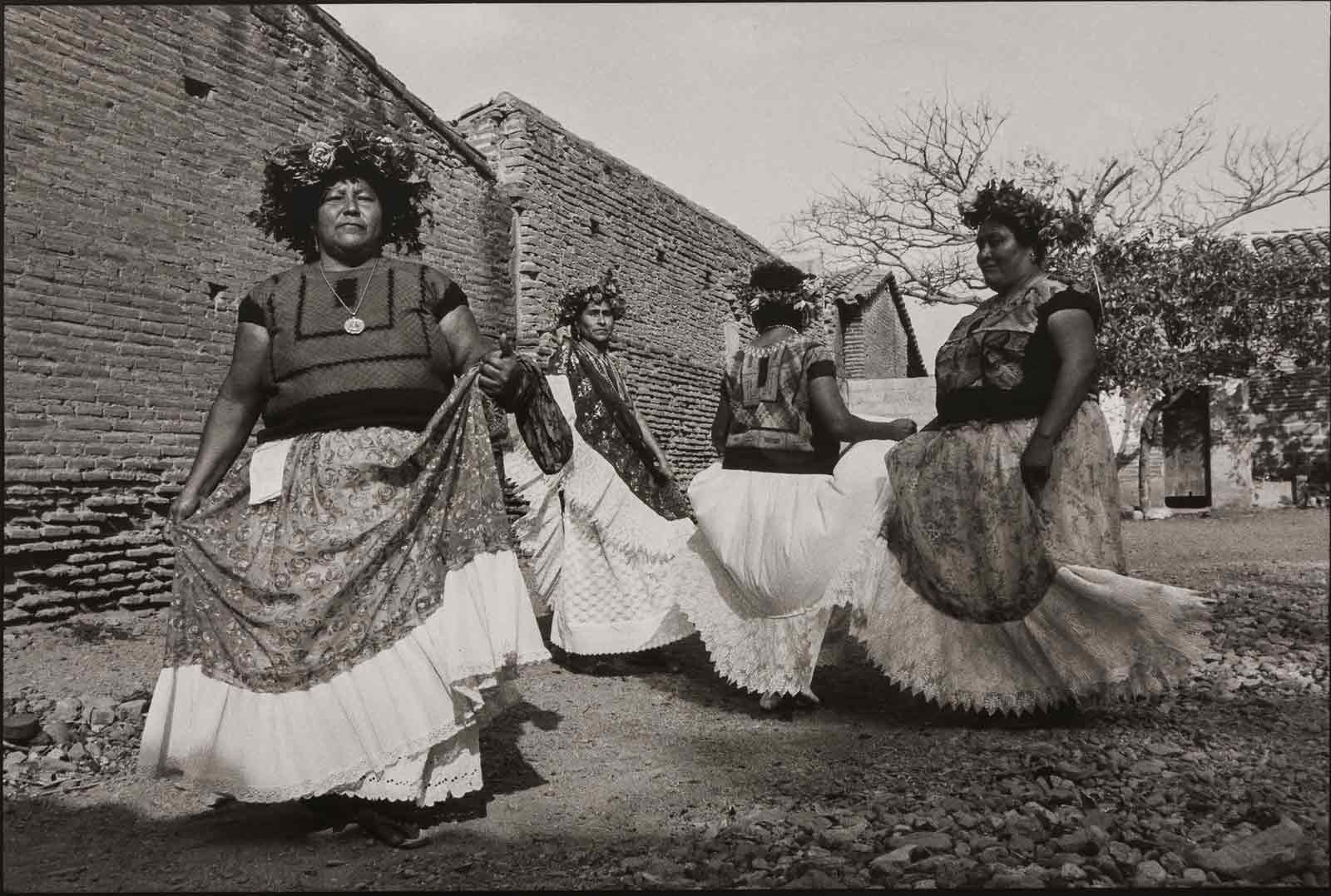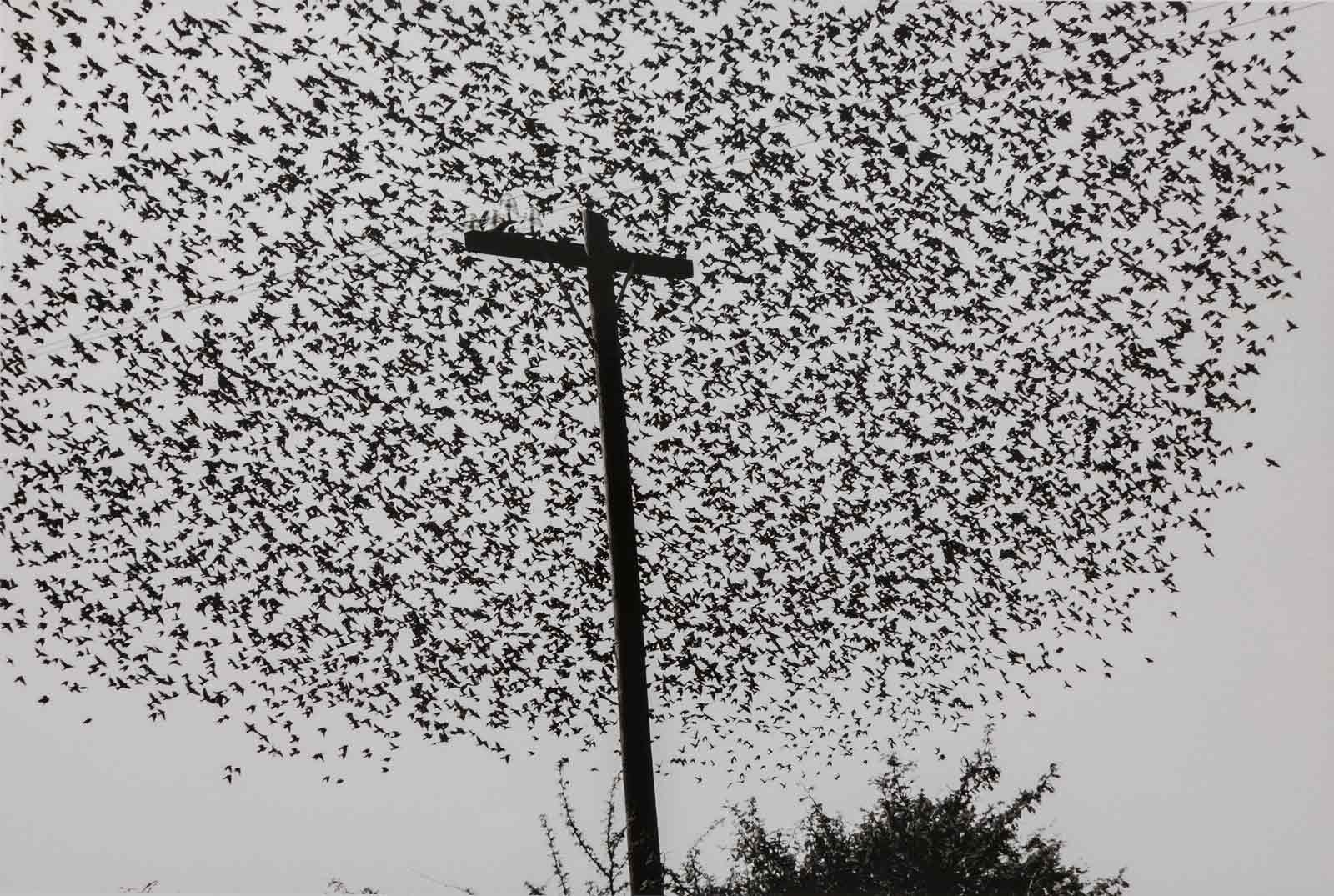The dark ballast of Iturbide’s photography is a deep knowledge of predation: how humans prey on animals; how modern industry exploits a largely indigenous underclass; how artists wrangle life from their subjects in the name of creation.

Graciela Iturbide: Dance, Juchitán, México, 1986
Consider the chickens, roosting at a vendor’s feet as he reads the daily news; or a semi-circle of women clutching freshly plucked carcasses—wings outspread, headless, then bundled and hung. In the photography of Graciela Iturbide, animals appear in various stages of preparation: walleyed fish dangle in pairs; severed goats’ legs herringbone across a spread of drying mats. Iguanas wreathed around a woman’s stoic face—like tentacles, or the rays of an aureole—are destined for soup. The woman in this final, famous image, Our Lady of the Iguanas (1979), is Zobeida Díaz, a vendor in the Oaxacan town of Juchitán, vaulted from the market’s everyday bustle into the realm of myth.
In “Graciela Iturbide’s Mexico”—a magnificent exhibition of approximately 125 gelatin silver prints at the Museum of Fine Arts, Boston—five decades of an extraordinary visual intelligence are on display. Winner of the Hasselblad Award (2008) and Cornell Capa Lifetime Achievement Award (2015), Iturbide has exhibited internationally for most of her career, but this is her first solo museum show on the East Coast since a modest traveling retrospective opened at the Philadelphia Museum of Art in 1998. Curated by Kristen Gresh in close collaboration with Iturbide, the show celebrates the museum’s recent acquisition of thirty-seven photographs, including two gifts from the artist. It is an overdue reintroduction to one of the world’s great photographers.
Born in 1942, the eldest of thirteen children in a prosperous Catholic family, Iturbide originally wanted to be a poet. She was already twenty-seven, a mother of three and a recent divorcée, when she enrolled at the National Autonomous University of Mexico, determined to study cinematography. But her vocation shifted again after the death of her young daughter, in 1970, when she began to obsessively photograph dead infants, or angelitos, laid out in tiny white coffins. One day, documenting a funeral, she found an adult cadaver sprawled across the cemetery path, skull and torso picked clean. “There were many birds in the sky,” she recounted. “The ones that had been pecking on the man.” It was the moment she decided to stop photographing angelitos. “I felt that Death was saying to me, ‘Enough!’”


